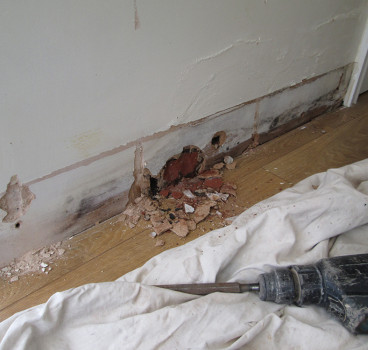Back to school and the same old story on fire safety
We are about to start another school year and once again, we find ourselves having the same discussion about fire safety guidance for schools. The last attempt to revise Building Bulletin 100 (BB100) was back in 2021 but nothing came of it, with government sliding aspects into the generic design brief for schools. This leaves us with a gap to the guidance written in 2007. In the meantime, schools have continued to face serious fires, leaving communities to deal with avoidable consequences, writes Tom Roche, secretary of te Business Sprinkler Alliance..
Recently, I was speaking with Terry McDermott, former Chief Fire Officer for Derbyshire and now part of the National Fire Sprinkler Network. The conversation turned to school fires, and he reminded me of three that happened in Derbyshire during a four-month period in 2020. Terry later spoke with the headteacher of one of those schools. The school has since been rebuilt and reopened. This time, thanks to a decision by Derbyshire County Council, the new building was fitted with sprinklers.
What struck me from their conversation wasn’t the rebuilding itself, but everything that happened in between.
The headteacher remembers the event vividly, from the moment she received a call from the alarm company asking if there was a fire (when she assumed they would be calling the fire service), to standing outside watching firefighters try, unsuccessfully, to stop the flames from destroying part of her school. She remembers being kept informed with what was happening, but the school burnt down in front of her.
In the immediate aftermath, she convened a meeting in the local church. The number one concern? Continuity of education.
Children began home schooling, then 200 pupils were split between four different schools. This meant buses every day, teaching assistants supervising travel, and anxious parents and pupils facing the disruption. Some children worried whether their temporary schools might also burn down. Fire drills became traumatic for the youngest.
Even lunch became an issue. The catering system had to be reworked with food prepared centrally, then distributed to four schools that didn’t have the space or capacity to handle the extra meals. Problems cropped up constantly, requiring staff to step in.
Those same staff faced longer commutes, fewer resources, heavier workloads, and mounting pressure. Staff retention became an issue with several leaving entirely.
Eventually, temporary buildings were brought in, and these stayed for nearly two years.
While the major rebuild decisions were handled by others, the headteacher and her staff were still drawn into discussions on school layout and design, all while trying to hold lessons together. The mental, logistical, and emotional toll was relentless.
Related Read: The forgotten, long-term economic impact of the Kings Dock car-park fire
Listening to Terry relay that conversation, it struck me how often the impact of a school fire is reduced to “things” or money. Consultations on fire safety requirements, including sprinklers, often focus on removing measures to cut costs. When asked why, the answer is usually about money.
But this story is a reminder that the real impact is human with the disruption to education, the distress to children and the relentless pressure placed on staff.
Just last week I saw a piece from the Department of Education1 championing the fact that they had reduced the level of non-attendance in schools. They estimated they had unlocked £2 billion in future earnings. Their point being a lost day in school is estimated to cost £750 in lost earning across the career of a typical student. It made me think about the school in Derbyshire which as a headline cost £6.9 million to rebuild but what was the true cost when we figure in all the impacts?
Do not get me wrong when we speak of schools, the immediate safety of those on site is always the priority. However, we also need to think of the longer-term impacts. I was heartened to hear that the new rebuilt school is fitted with sprinklers. I could not help but think if they had been fitted in the first place this would have significantly reduced the resultant damage, leading to minimal disruption to education. The focus could have remained where it belongs on learning, limiting future impact and not on surviving the aftermath of a fire.
Until the fire safety guidance reflects that reality, we will keep having this conversation every September.
https://www.gov.uk/government/news/record-attendance-gains-unlock-over-2bn-in-future-earnings
Additional Blogs

How construction can cut Its carbon footprint by caring for soil
Soil is often dismissed as mere dirt, but it is one of the planet’s most powerful carbon stores, holding more than all of the world’s forests combined. Yet in our rush to build, pave and develop, we...
Read moreWhat is bridging damp? How it happens and how to fix it
Bridging damp happens when moisture finds a path around the building’s damp-proof course (DPC) so it reaches your internal walls and skirting. If you see damp patches rising above the skirting or...
Read more

The silent death of the fixed-price contract
For decades, the fixed-price contract has been the backbone of construction procurement. It promised certainty with a defined scope, an agreed sum and a clear transfer of risk from client to...
Read more